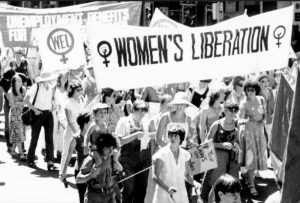 Politics
Politics
WW2
- 1939 Germany invades Poland
- 1940 May — France and Britain declare war on Germany
- 1940 June — Germany gains control of France
- 1940 August/September Germany bombs England
- 1940 Japan invades French Indochina (Vietnam)
- 1941 December Japan bombs Pearl Harbor — USA
- 1941 — US declares war on Japan, Germany honors allegiance with Japan and declares war on the US
- 1941-44 The war ensues in Europe, including Russia, the Pacific islands, including Alaska and in Northern Africa. In addition to the war efforts, Hitler launched a campaign ofgenocide against the Jewish population
- 1945 May Victory is declared in Europe
- 1945 August Nuclear bombs are dropped on 2 Japanese cities
- 1945 Sept Japan surrenders
More than 17 million soldiers died, and 18 million civilians
The economies of Europe and Asia were decimated
Economic Recovery – Post WW2
European Recovery Transcript (PDF)
The Marshall Plan (optional link)
Economic aid to Europe, based on cooperation for mutual benefit
This eventually brought about prosperity in Europe
Japan crafted a democratic constitution which forbid the manufacturing of arms – (optional link)
Japan Reconstruction Transcript (PDF)
Without a defense budget, Japan’s economy also prospered leading the world by 1970 in GNP
The United States
Optional links below on American lifestyle in the mid 20th century
The Cold War

Oct. 28, 1961. An American soldier monitors the movements of Soviet tanks during the confrontation at Checkpoint Charlie.
- The loss of European empires overseas
- The Soviet Union demonized capitalism
- The United States demonized communism
- The US and other European allies built their nuclear weapons programs
- The Soviet Union built their nuclear weapons programs
- This lead to a world power struggle that was fought in ideology, rather than open warfare
Civil Rights Movement
As African Americans became more integrated into society, the needs for equal treatment under the law became increasingly apparent. Most of America was segregated. Black Americans were treated as “separate, but equal,” except it wasn’t equal. The Civil Rights Movement really began momentum in 1954 when segregated public school education was struck down by the Supreme Court.
Many African Americans took public actions: boycotts, campaigns to register Black voters, and peaceful marches to focus attention on equality and fair treatment under the law and in society.
REQUIRED VIDEO BELOW:
Vietnam War
- A geographic region long dominated by foreign powers
- Vietnam people resisted Chinese take over for 2 centuries
- Then rallied in the mid-20th century against French domination
- The French were defeated in 1945
- US began to support the non-Communist government in the south against the Chinese supported government in the north.
- US became increasingly involved in the struggle against North and South
- The Vietnam War was the first televised war – (OPTIONAL LINK)
- 1973 — US forces withdrew from Vietnam
- 1975 — North Vietnam overtakes the South — One country The Republic of Vietnam is created
- Note – misinformation in recorded lecture – the average age was 22, compared to 26 for WW2.
- Bitter Anti-War Protests in the US. (Short optional video – excellent content)
Women’s Movement
REQUIRED VIDEO
Philosophy
Existentialism in the arts – REQUIRED
Existensialism Transcript (PDF)
Soren Kierkegaard (Danish) 1813-55
Existentialism is based on the Kierkegaard’s ideas (optional link)
The individual is ultimately responsible for the choices they make
Our choices require respect for others, virtuous behavior and faith in spiritual matters
Jean-Paul Sartre (French) 1905-80 (optional link)
- Expanded on Existentialism
- Denied that there was a spiritual dimension to our existence
- What people make of their situations, ultimately determines who they are
Simone de Beauvoir (French) 1908-66 (optional link)
- Women are biologically different than men
- However, it is only how society views women that truly differentiates women from men
- Women need to break the pattern of being seen in relationship to men
Religion
The Creation of Israel
- 1948 — Post WW2
- Creation of a Jewish homeland
Islamic Influence
Nation of Islam — USA (optional link)
Sciences
Advances in:
- understanding humans – genetics
- anthropology
- understanding atoms and smaller
- weapons of mass destruction
- entertainment and productivity
- medicine
- diagnostic instruments
- vaccines
- contraception
- space exploration
- the effects of humans on earth
1944 – Atomic weaponry
1944 – DNA is isolated
1945 — Improvements in rocketry
1946 – The first computer
1946 — First record to sell a million copies
1949 — First Xerox copier
1950 – Color TV
1950 — Further development of color in movies
1953 — DNA double helix structure discovered
1957 — Superconductivity explained
1957 — First intercontinental ballistic missile and first satellite, first animal to orbit earth
1959 — First probe to impact the moon
1960 — First fossils of early Homo Sapiens in East Africa
1962 — Birth control pill first available to the public
1964 — Existence of quarks proposed
1965 — Theory of plate tectonics
1967 —First warning of greenhouse effect
1969 — First man on the moon
1971 — First space station
1973 – Invention of MRI
Architecture
Mid 20th Architecture Transcript (PDF)
Architects from the International Style continued to expand on the definition of Modern architecture:
- Frank Lloyd Wright Guggenheim Museum
- LeCorbusier — Notre-Dame-du-Haut
Other new architects helped further the concept of Modern design
Links below are all optional
- William Pereira (American) 1909-1985
- Landmark building — Transamerica Pyramid
- Ludwig Mies van der Rohe (German) 1886-1969
- International career
- Famous for his motto “Less is more.’
- Popular work — Lake Shore Drive Apartment House
- Eero Saarinen (Finnish) 1910-1961
- Career in America
- Architect and furniture designer
- His “Tulip’ chair became the basis for the original chairs on Star Trek
- Landmark work — St. Louis Arch
- Landmark work — TWA Terminal JFK International Airport





